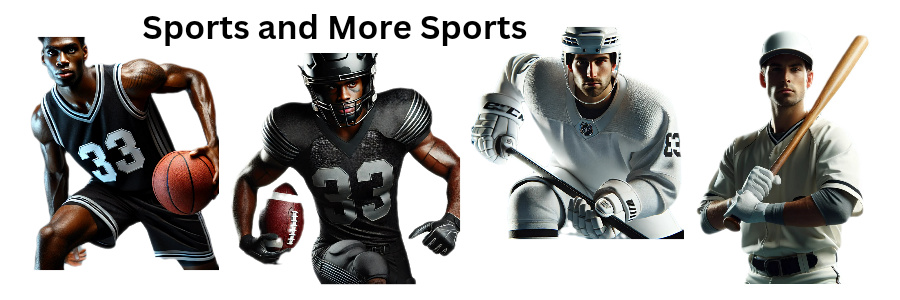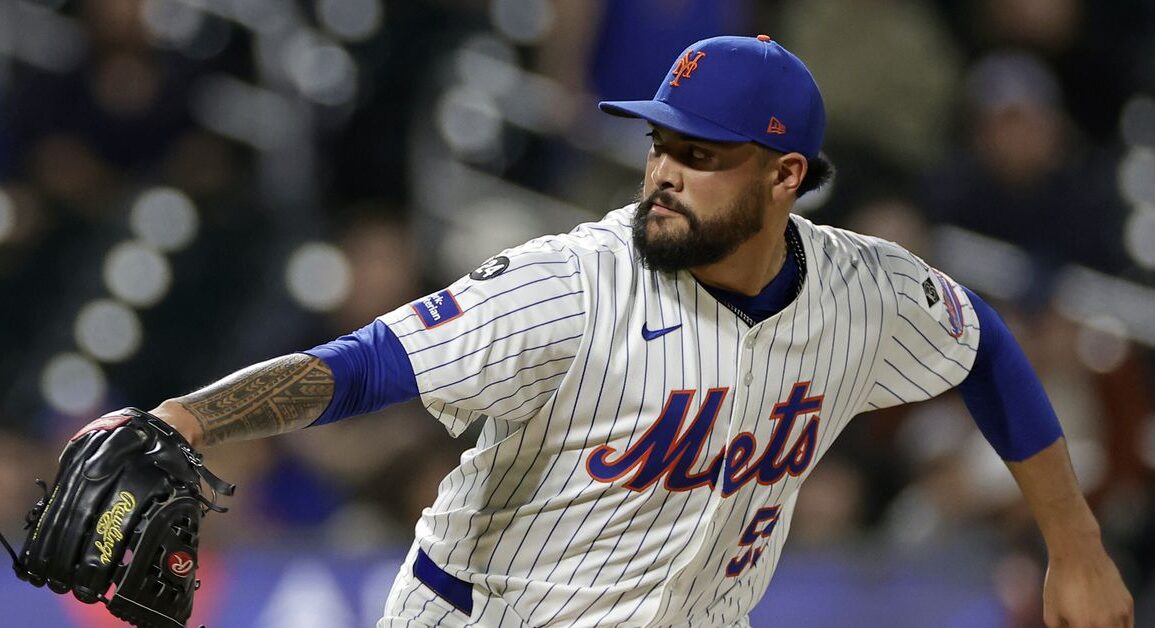
Though it’s no one’s idea of a juggernaut, the Mets starting rotation is looking a little clearer than it did at this point last offseason.
A lot of work needed to be done to replace the production left by Jose Quintana, Luis Severino and Sean Manaea—and to the front office’s credit, that work seems to have wrapped up before the new year. It certainly helped to replace Manaea with Manaea, who just signed a three-year, $75 million contract to stay in Queens.
Perhaps that won’t be the last starting pitching move David Stearns makes this offseason, but it feels like the last big move, one that puts a final piece in place of what looks to be a competitive staff.
The big question about the Mets rotation is not necessarily the pecking order, but whether the team will employ a five or six-man rotation to start the year—something we’ll get into a little later. But for now, let’s get pecking:
Kodai Senga
No one should quibble with the idea of Senga being the ace of this team. Over the last two seasons, Senga has led all Mets pitchers in both Baseball Reference Wins Above Replacement (4.6) and Fangraphs WAR (3.6) despite making only one regular-season appearance in 2024. Senga also flashed some brilliance in three limited postseason outings, even if they will mostly be remembered by the numerous walks and earned runs.
A healthy Kodai Senga is still the most talented and potentially productive starter on the roster, and as someone with extensive high-leverage experience as an ace pitcher in Japan’s NPB, there’s no better candidate to take up the same role for the Mets.
Put it this way: The fact that the Mets are considering running a six-man rotation has mostly to do with optimizing their ace—without that factor, the Mets likely wouldn’t consider extending a starting rotation with a lot of question marks on it.
Sean Manaea
Perhaps he didn’t quite pitch to the level of an ace, but when the Mets needed a horse during their flaming-hot second half in 2024, Manaea galloped to the front of the rotation.
Manaea led all Mets pitchers in wins (12), strikeouts (184), and bWAR (3.0), and from July onward led all MLB pitchers in innings pitched (105 1/3, over seven innings more than second-place Nathan Eovaldi). He even turned it up in the playoffs, pitching effectively in three starts before tiring out against the Dodgers in the knockout Game 6 of the National League Championship Series.
And it’s that fatigue factor that might make a six-man rotation work for Manaea, as well. The soon-to-be 33-year-old registered his career high in innings pitched last season (181 2/3), much of those while tinkering with an ultimately successful mechanical adjustment. If the Mets can find some more rest for Manaea between starts, it could limit the lefty’s injury liability and cement him in the top of the rotation for a healthy majority of the season.
David Peterson
Imagine at this point last year thinking Peterson would be cemented in the Mets starting rotation for the 2025 season—much less in the front half of the rotation.
But that testifies to the progress that Peterson made in 2024—a year that showed a lot of concerns with his underlying metrics, but also one that proved Peterson’s ability to limit runs in high-pressure situations.
Maybe the incremental changes he made with pitch selection (i.e. throwing his sinker more) will once again manifest into big-league production—or maybe Peterson will regress to being the fringe-level starter he’s been most of his career. Either way, the lefty will get a chance to prove himself once again.
Frankie Montas
The Stearns-era Mets bought low last year on two oft-injured, high-talent starters in Manaea and Severino, and it worked nearly to perfection. This time, the project turns to free agent signing Frankie Montas, who is on his fifth team in the last three seasons.
Montas pitched 150 2⁄3 rather meh innings for Milwaukee and Cincinnati in 2024, slightly underperforming compared to his expected numbers (which, to be fair, were not that exciting, either). But the righty also got Cy Young votes pitching for Oakland in 2021 and found a lot of success with his sinker last season, meaning a Severino-like resurgence for the Mets isn’t entirely out of the question.
Clay Holmes
It feels a little premature to put a pitcher who last started a game in 2018 as the fifth starter in the rotation, but all reports show the Mets are committed to making Holmes a regular MLB starter.
Perhaps it’s to exorcise the demons from the totality of the Seth Lugo experience, or perhaps it was seeing how well the Giants converted Jordan Hicks to a starter (at least for the first two months of 2024)—whatever the reason, Holmes will get his chance to start at the back end of a five (or six) man rotation.
But what about that sixth spot?
Tylor Megill, Paul Blackburn, José Buttó
If the Mets orient their staff around a six-man rotation, there are a few interesting options to bring up the caboose of the staff.
Megill seems born for this role, as a high-variance pitcher with a talented arm that has provided enough juice to stick around but has yet to “prove it.” If Megill does indeed “prove it” with solid production from the back end, that could give the Mets a dangerous rotation, even if it doesn’t reach the heights of Philadelphia’s starting staff.
Of course, it’s hard to justify Megill for that role when Buttó has been the better pitcher over the last two seasons. But the dilemma the Mets had with Buttó last year is the dilemma they’ll face this year—namely, do they reach for good production from Buttó as a starter or pencil in effective relief outings for a bullpen that will likely need it? Call it the Lugo quandary, only with Buttó and a sixth starter at stake.
And then there’s Blackburn, who has much more MLB experience than either Megill or Buttó, but hasn’t been better than fine in any of his Major League seasons. Fun fact though: He’s one of three Mets starters on the active roster with an All-Star appearance (Senga, Holmes)…so that’s something.
Blackburn might also be the best fit for the starting role since Megill and Buttó saw so much time in the bullpen last year, anyway. Any configuration that gets all three of these pitchers on the active roster could make the Mets stronger, especially since it’s not entirely clear who for sure will support Edwin Díaz in the bullpen.
The Rest
Call them depth, call them backup plans, call them emergency starters—the Mets certainly have them.
First up is Griffin Canning, who is by the strictest definition a Major League starter—just not a very good one last year, giving up an American League-high 99 runs in 31 starts for the Los Angeles Angels.
Then there’s Dylan Covey and Max Kranick, both on the 40-man roster with Major League starting experience. Kranick, however, spent most of 2024 with Triple-A Syracuse and hasn’t pitched in the Majors since 2022, while Covey has started only one MLB game since 2019, a span that included two years spent in Taiwan. Safe to say, if either of these pitchers starts more than two games for the Mets in 2025, then something has gone terribly wrong.
And last to mention are the prospects. Christian Scott (technically not a prospect anymore) is expected to miss the entire 2025 season recovering from Tommy John Surgery, though the sparks of talent he showed in 2024 make him an interesting candidate to slot in the 2026 rotation. The same could be said of top pitching prospect Brandon Sproat, who has big arm talent but was pretty bad in seven starts in Syracuse last season. Much like with Covey and Kranick, it’s probably best for the Mets if they don’t see MLB action this season.
Especially Scott. No baseball for him just yet!
This post was originally published on this site be sure to check out more of their content.








